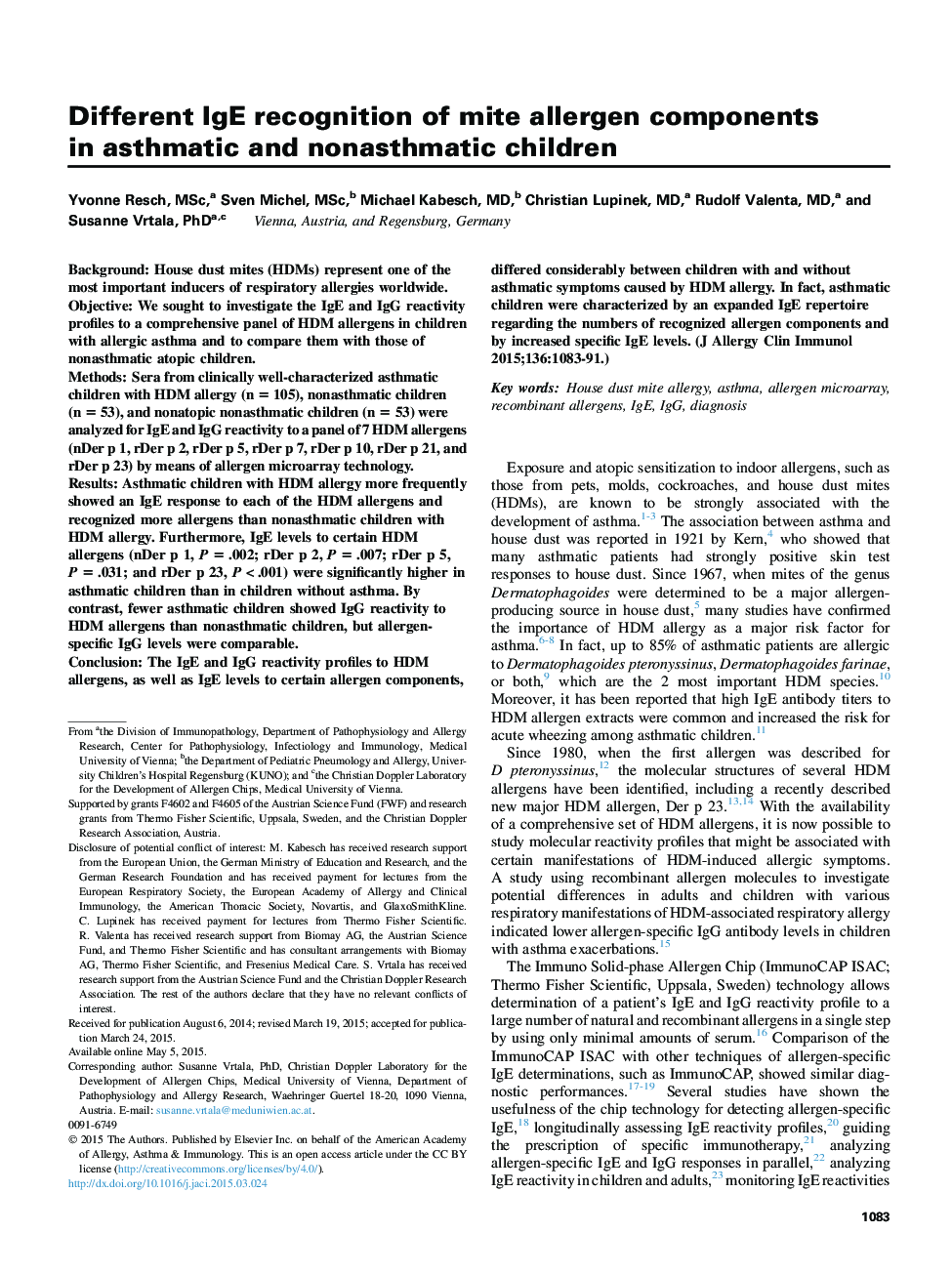| Article ID | Journal | Published Year | Pages | File Type |
|---|---|---|---|---|
| 6063519 | Journal of Allergy and Clinical Immunology | 2015 | 9 Pages |
BackgroundHouse dust mites (HDMs) represent one of the most important inducers of respiratory allergies worldwide.ObjectiveWe sought to investigate the IgE and IgG reactivity profiles to a comprehensive panel of HDM allergens in children with allergic asthma and to compare them with those of nonasthmatic atopic children.MethodsSera from clinically well-characterized asthmatic children with HDM allergy (n = 105), nonasthmatic children (n = 53), and nonatopic nonasthmatic children (n = 53) were analyzed for IgE and IgG reactivity to a panel of 7 HDM allergens (nDer p 1, rDer p 2, rDer p 5, rDer p 7, rDer p 10, rDer p 21, and rDer p 23) by means of allergen microarray technology.ResultsAsthmatic children with HDM allergy more frequently showed an IgE response to each of the HDM allergens and recognized more allergens than nonasthmatic children with HDM allergy. Furthermore, IgE levels to certain HDM allergens (nDer p 1, P = .002; rDer p 2, P = .007; rDer p 5, P = .031; and rDer p 23, P < .001) were significantly higher in asthmatic children than in children without asthma. By contrast, fewer asthmatic children showed IgG reactivity to HDM allergens than nonasthmatic children, but allergen-specific IgG levels were comparable.ConclusionThe IgE and IgG reactivity profiles to HDM allergens, as well as IgE levels to certain allergen components, differed considerably between children with and without asthmatic symptoms caused by HDM allergy. In fact, asthmatic children were characterized by an expanded IgE repertoire regarding the numbers of recognized allergen components and by increased specific IgE levels.
